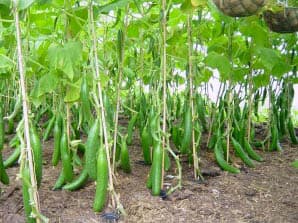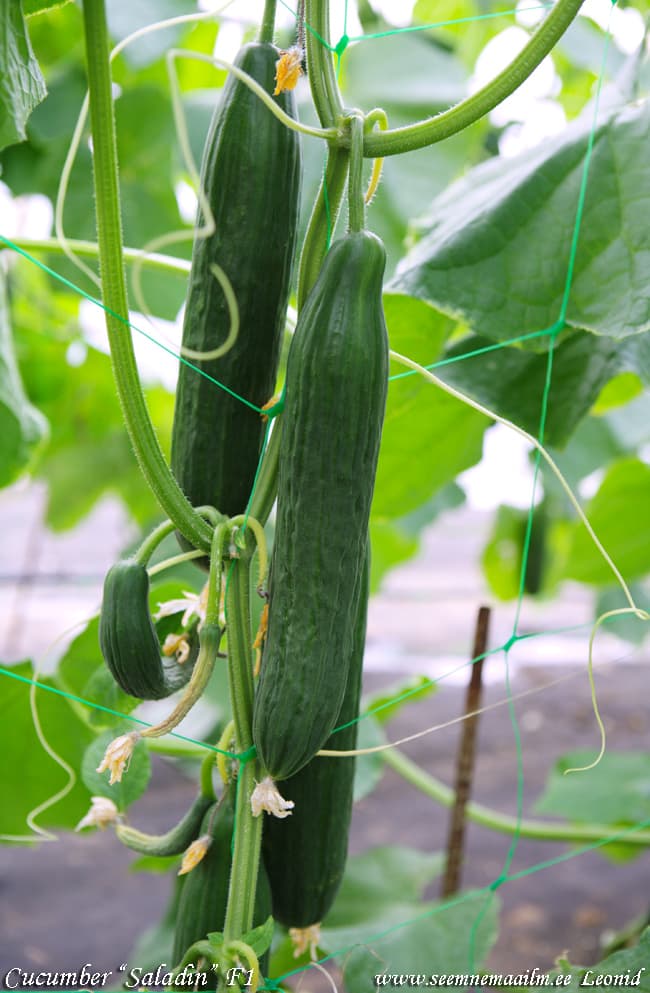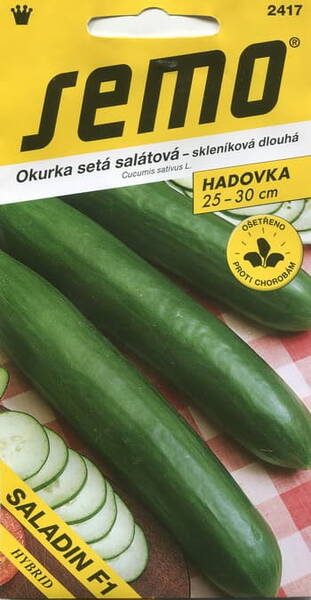Партенокарпический гибрид огурца для теплиц, с длинными слегка искривлёнными плодами длиной 30-35 см).
Генетически устойчив к образованию горечи. Устойчив к кладоспориозу. Салатного назначения.


* В зимних теплицах выращивают пчёлоопыляемые и партенокарпические гибриды, в технологии возделывания которых существуют значительные различия.
Выращивание партенокарпических гибридов.
Развитие промышленного тепличного овощеводства и строительство крупных тепличных комбинатов вызвали необходимость использования «технологичных» сортов, обеспечивающих высокую производительность.
Этому требованию отвечают партенокарпические гибриды. Они обладают мощным ростом и высокой облиственностью, что позволяет высаживать на единицу площади в 2-2,5 раза меньше растений по сравнению с сортами пчёлоопыляемыми и обеспечивать существенную экономию семян и рассады, сокращение затрат труда на уход за растениями и уборку урожая, исключение расходов на содержание и уход за пчёлами.
Благодаря высокой продуктивности растений и большей массе плода (300-400 г) длинноплодные «партенокарпики» за 4-4,5 месяца плодоношения дают до 22-24 кг плодов на растение.
По способности образовывать женские цветки гибриды партенокарпического огурца делят на 3 группы:
1) смешанного типа цветения, т. е. образующие и женские и мужские цветки (Спору, Гринспот, Саладин);
2) преимущественно женского типа цветения, образующие незначительное количество мужских цветков, особенно в нижней части главного стебля (Тоска, Бриллиант, Московский тепличный);
3) полностью женского типа цветения, не образующие мужских цветков; они имеют самые большие потенциальные возможности получения высоких урожаев (Фарбио, Сандра, Бирюса и др.),
кроме того, их можно выращивать и при залётах пчел, так как отсутствие мужских цветков исключает возможность опыления.
В семеноводстве таких гибридов для получения мужских цветков растения обрабатывают гиббереллином. У гибридов смешанного и преимущественно женского типа цветения закладывается больше мужских цветков при пониженной освещённости и неблагоприятных условиях минерального питания.
При выращивании партенокарпических сортов и гибридов в зимне-весенней культуре на 1 га теплиц высаживают около 15-16 тысяч растений, для чего необходимо высевать около 18 000 шт., или 600-650 г семян.
Оптимальные сроки посева и посадки огурца определяются как условиями освещённости, так и биологическими особенностями сорта.
Например для посева гибрида "Апрельский" (бывший Московский тепличный) в условиях 3-й световой зоны оптимальный срок посева 1-5 декабря, посадки - 2-5 января; во 2-й световой зоне - на одну неделю позднее; в 4-5-й - соответственно на 7-15 дней раньше.
При более поздних сроках посева и посадки растения по отдаче как раннего, так и общего урожая отстают соответственно на 18-20 и 7-12 %.
Гибриды типа Фарбио можно выращивать в более ранние для данной световой зоны сроки: при посеве в конце ноября и посадке рассады 28-30 декабря, при этом урожайность огурца не только не снижается, но может быть значительно выше. Это имеет большое организационное значение, так как позволяет удлинить оптимальные сроки посадки рассады.
Параметры стандартной рассады партенокарпических гибридов следующие: возраст - 30 дней; высота растения - 25-30 см; длина подсемядольного колена - не более 5 см; число листьев - 5-6; площадь листовой поверхности - 6,0-7,0 дм2; сырая масса надземной части - около 35-40 г, сухая около 2,5 г; хорошо развитая корневая система.
После 33-35 дней от посева растения начинают быстро вытягиваться, и рассада теряет качество. До начала посадки теплицы должны быть полностью подготовленными.
В блочных теплицах при ширине звена 6,4 м высаживают 4 ряда, с междурядьями 160 см. Эта ширина междурядий предусмотрена как оптимальная для партенокарпических сортов огурца в самом проекте блочной теплицы, в соответствии с чем расположены трубы подпочвенного обогрева и дождевания, а также надпочвенные регистры.
В ангарных теплицах применяют поперечное расположение рядов растений, это обеспечивает лучшие условия при уходе за растениями и равномерную освещённость в посадках.
Площадь питания растений зависит от сорта, сроков выращивания (т. е. условий освещенности), а также от уровня минерального питания.
При увеличении площади питания улучшается освещённость в рядах растений, образуется больше листьев и боковых побегов, возрастают площадь листовой поверхности и продуктивность одного растения, но урожайность с единицы площади (кг/м2) с определенной густоты стояния падает.
При уменьшении площади питания есть другая опасность - загущение посадки ведёт к затенению, преждевременному отмиранию нижних листьев, застою сырого воздуха и появлению заболеваний.













